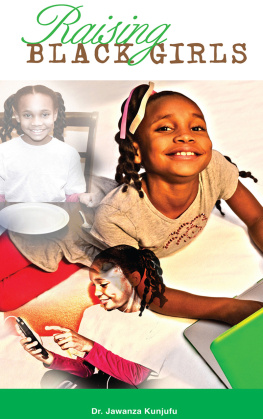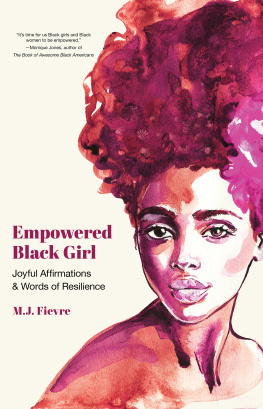Published in 2018 by Cavendish Square Publishing, LLC
243 5th Avenue, Suite 136, New York, NY 10016
Copyright 2018 by Cavendish Square Publishing, LLC
First Edition
No part of this publication may be reproduced, stored in a retrieval system, or transmitted in any form or by any meanselectronic, mechanical, photocopying, recording, or otherwisewithout the prior permission of the copyright owner. Request for permission should be addressed to Permissions, Cavendish Square Publishing, 243 5th Avenue, Suite 136, New York, NY 10016.
Tel (877) 980-4450; fax (877) 980-4454.
Website: cavendishsq.com
This publication represents the opinions and views of the author based on his or her personal experience, knowledge, and research. The information in this book serves as a general guide only. The author and publisher have used their best efforts in preparing this book and disclaim liability rising directly or indirectly from the use and application of this book.
CPSIA Compliance Information: Batch #CS17CSQ
All websites were available and accurate when this book was sent to press.
Library of Congress Cataloging-in-Publication Data
Names: Hulick, Kathryn, author.
Title: Kimberly Bryant : founder of Black Girls Code / Kathryn Hulick.
Description: New York : Cavendish Square Publishing, [2018] | Series: Leading women | Includes bibliographical references and index.
Identifiers: LCCN 2017004028 (print) | LCCN 2017008747 (ebook) | ISBN 9781502627032 (library bound) | ISBN 9781502627049 (E-book)
Subjects: LCSH: Bryant, Kimberly, 1967---Juvenile literature. | Women engineers--United States--Biography--Juvenile literature. | African American engineers--United States--Biography--Juvenile literature. | Girls--Education--United States--Juvenile literature. | Minorities in science--United States--Juvenile literature. | Technical education--United States--Juvenile literature. | Black Girls Code (Organization)--Juvenile literature.
Classification: LCC TA140.B787 H85 2018 (print) | LCC TA140.B787 (ebook) | DDC 609.2 [B] --dc23
LC record available at https://lccn.loc.gov/2017004028
Editorial Director: David McNamara
Editor: Tracey Maciejewski
Copy Editor: Nathan Heidelberger
Associate Art Director: Amy Greenan
Designer: Lindsey Auten
Production Coordinator: Karol Szymczuk
Photo Research: J8 Media
The photographs in this book are used by permission and through the courtesy of: Cover, Fernanda Calfat/Getty Images; p. Noam Galai/WireImage/Getty Images.
Printed in the United States of America
Kimberly Bryant attends the annual Glamour Women of the Year event, which honors women who have made an impact on the world.
CHAPTER ONE
How a Revolution Begins
K imberly Bryant is proud to be a nerd. Shes an engineer who loves science fiction and going to the movies. To her, technology is more than just her careerits cool. But unfortunately, shes an outlier. Just 3.5 percent of all working engineers and scientists in the United States are black women. Women of all races and ethnicities are less likely than men to work as scientists or engineers, but women of colorincluding African Americans, Hispanics, and American Indiansare almost completely missing from these important technical fields.
Bryant aims to change that. She founded the nonprofit Black Girls Code in 2011. The organization teaches coding, game design, robotics, and other tech skills to girls ages seven to seventeen from underrepresented communities. Since its founding, Black Girls Code has held numerous classes, workshops, and summer camps, and touched the lives of almost eight thousand girls. Theyve opened chapters in eleven cities in the United States as well as one in Johannesburg, South Africa. Some of the girls who have been through the program have launched their own apps online. Others are pursuing computer science degrees at competitive colleges and universities. We believe teaching girls of color to code is revolutionary, Bryant says. In fact, revolution is a theme that has colored her entire life, beginning with her childhood in Memphis, Tennessee.
The Struggle for Civil Rights
Kimberly Bryant grew up in the inner city of Memphis, raised by a single mother. She was born on January 14, 1967, just a day before the thirty-eighth birthday of Martin Luther King Jr., the inspiring and famous leader of the civil rights movement. This movement sought to provide equal rights for black Americans. In the 1950s, blacks living in the South had to follow laws that promoted segregation, oppression, and other forms of unfair and unequal treatment. For example, in Mississippi, white and black children had to attend separate schools. Poll taxes, literacy tests, and complicated registration systems prevented most black people from voting. These so-called Jim Crow laws also barred black people from certain housing, theaters, restaurants, stores, baseball fields, and even seats on the bus.
In December 1955, a woman named Rosa Parks had had enough of this unfair treatment. She was riding the bus home after a long day at work and refused to give up her seat so a white man could take it. This was against the law at the time. She was arrested, and her actions kicked off a bus boycott in Montgomery, Alabama, which ended with the city lifting the law. Buses were no longer segregated in Montgomery, but the fight for civil rights was just getting started. Martin Luther King Jr. had led the bus boycott. In January 1957, he became president of the Southern Christian Leadership Conference, a group of ministers and other activists who focused on nonviolent ways to promote equality. King quickly became a well-known and well-loved spokesperson for peaceful protest and civil rights.
In 1963, King organized the March on Washington for Jobs and Freedom. The march and rally ended with the famous speech I Have a Dream, in which King said, I have a dream that my four little children will one day live in a nation where they will not be judged by the color of their skin but by the content of their character. In 1964, King was awarded the Nobel Peace Prize, and the United States Congress passed the Civil Rights Act, which made segregation in public places and employment discrimination illegal. However, fame made King a target for those who didnt agree with his ideas. On April 4, 1968, a little over a year after Kimberly Bryant was born, King was staying at the Lorraine Motel in Memphis. He stepped out onto the balcony, and was fatally shot.
This Medallion of Honor was one of the many awards Martin Luther King Jr. received for his contributions to the civil rights movement.
Life in the Inner City
Though Bryant was too young to remember the incident, the fact that it occurred in her beloved hometown and the fact that Kings birthday is so close to her own both seem like more than mere coincidences. I like to think that revolutionary and radical action was running through my very veins, from the time I set foot on the Earth, she says. Even as a young person, she was a social activist. She got involved in student government and community organizations, and planned to be a lawyer.
At the time, she didnt realize engineering or computer science were options for her career. In the inner city where she lived, no one owned computers. She grew up in an area of the city called North Memphis, which Bryant says is a blighted area now. There arent too many kids that make it out, she says. But, she and her siblings were different from their friends. They were smart and enjoyed school, so they were sent to special programs and took advanced placement classes. Her mother told them that excelling in school was the key to a good future. Bryants older brother was the geek of the family, while she was the nerd. He was into video games, while she was into books and reading. Still, she would follow him around and go everywhere with him. She wanted to do what he did.













